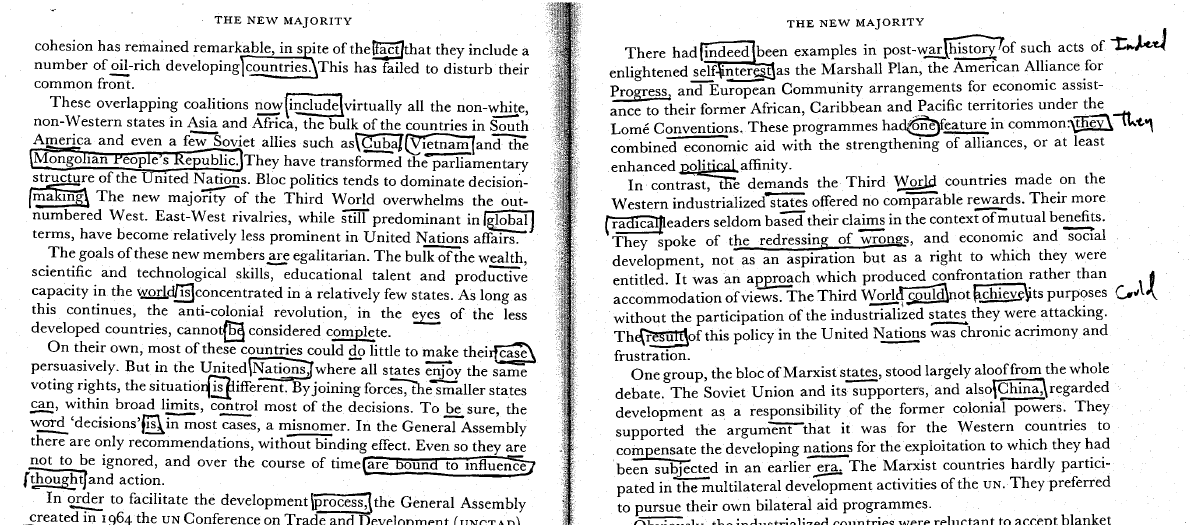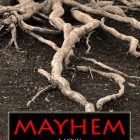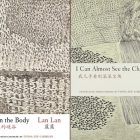“The dead do not cease in the grave” : Srikanth Reddy’s The Voyager

Why do we erase? We make mistakes. Or, different words demand emphasis. Or, we want to return to the beginning. In creating a poem out of erasing another text, we ask questions of the text itself, but we also open up an analysis of silence.
The Voyager is an erasure poem by Srikanth Reddy that chooses its adventure by three different routes. For his source text, Reddy uses Kurt Waldheim’s memoir The Eye of the Storm. Waldheim was Secretary-General of the U.N. from 1972-81 and a former intelligence officer in Hitler’s Wehrmacht. This makes Voyager especially chilling; although named after the Voyager 1 space probe, the poem as spacecraft features, in its component parts, the words of a man who did not speak on the Holocaust, despite his direct involvement with its horror. The engine of The Voyager becomes an aching silence: words are erased to bring forth more quiet, but as a different shade of not speaking.
And yet, the book does what the actual Voyager probe cannot do, or really what no literal journey can make manifest: Reddy presents three versions of travel. The first part is a Tractatus-style Wittgenstein-ian prose poem by way of Gertrude Stein, featuring lines like: “A world is a world is a world.” Another line runs: “One would not wish this account to become a catalogue of the disappeared.” Who is speaking throughout the text? Some philosopher? Waldheim himself through Reddy’s editing? We’re treated to a paradoxical nihilism that ends: “The silent alone lie united.”
Book 2 of The Voyager, then, sweeps up prose blocks self-reflecting the first part’s terrifying and strange koans. The third, in another bizarre turn, reflects a breaking across the page of tercets, beckoning in a Dante-voice turned more existential:
I had not come to stay.
You will go in
said Nobody.
What Reddy’s book makes apparent is how nothingness and the erased can only speak so often and also so little. We know that ghosts might appear but, as in the initial appearance of specter in Hamlet, it’s often difficult to decipher what they say or indicate. Reddy’s book is a haunting in trio of the dead who “do not cease in their graves” and we’re also unsure why they’re not ceasing, what is annunciated or announced by them. This is exactly the same with a fully erased page: there’s too much blank space, too much emptiness, too much nothing. Becoming nobody still presents a somebody, but without any detail to really craft an identify. The poem ends, for the fourth time, in epilogue:
I am a
believer in
silent
prayers
relinquished.
What does it mean to believe in silence? What happens when prayers, in silence, are given up? Is that what speaking looks like? How it sounds?
As Gérard Genet notes in his “Introduction to the Paratext,” the paratext is how “a text makes a book of itself.” Reddy’s operation concerns itself with making an already existing book—Waldheim’s memoir—into three books, and preoccupies itself with the impossible: making a new text where no words can offer any assistance or aid. The great horror of the Holocaust—and, indeed, of all atrocities and trauma—relies partly on the inability to annunciate the limit-event, to rely on a horrifying blankness that insidiously corrodes memory. But Reddy’s conclusion seems to state that texts, and the men who make them, good or bad, ultimately do not stay put: they cannot go on without speaking from the margins, from the so-called empty spaces, as “waves rise and fall, but the sea remains.”



